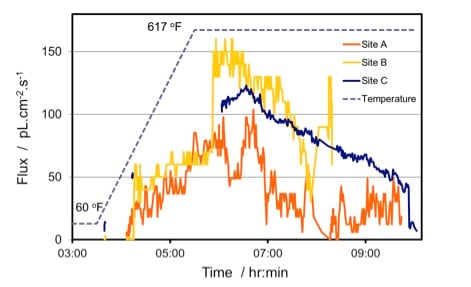Marc McConnell, P.E.: About the Author
Metallurgy and Fixed Equipment Engineering Coordinator, Pro-Surve Technical Services

Marc McConnell has more than 30 years of crude oil refining experience as a maintenance/reliability corrosion engineer, process engineer, project engineer, project manager, mechanical integrity expert, and business manager. He is an active member of several industry groups, including the American Society of Mechanical Engineers, National Association of Corrosion Engineers, and the American Petroleum Institute, where he has stewarded key initiatives. Marc teaches both NACE and API related courses in the US and internationally, and is recognized globally as an expert in asset integrity. Marc is currently the Chair of API 939C Sulfidation and API 970 Corrosion Control Documents.
Is this you? Please help us keep this page up-to-date by occasionally submitting your updated information.
Published Articles
Understanding how steel can change and be manipulated is crucial to our ability to spot potentially harmful situations in the field. Whether it is a blade made too brittle or a weld that needs post-weld heat treat, knowledge is power.
Hydrogen is a common culprit of equipment damage in the process industries. As hydrogen-induced damage can occur in multiple forms, it’s critical to identify the specific damage mechanism you’re dealing with before undertaking measures to prevent, mitigate, or repair.
The concept of reducing Condition Monitoring Locations (CMLs) is misguided, and the number and location of CMLs should be OPTIMIZED, not systematically reduced. CML allocation in piping requires a good process, otherwise, you can run into a lot of dead ends before arriving at your intended destination.
If we could measure, understand, mitigate, and most importantly, control corrosion, we can do a better job of keeping the product in the pipes. To accomplish this task, we needed to know what is causing the corrosion and how to control it.
The role of an API inspector is rapidly changing. Necessary skills for success have transformed as technology, standardization, and regulations have become part of the way of life.
One difficulty new company inspectors typically have is becoming comfortable in their new role. This is due to the fact that they have received little guidance about where they fit in with the "team." Where are they on the organization chart?
High temperature sulfidation is probably the most well- known corrosion mechanism in the oil refining industry because it occurs in large sections of the refinery.
This is the second of two articles published in Inspectioneering Journal discussing the value of hydrogen bake-outs. Our first article was published in the May/June 2013 issue and received a great response from the Inspectioneering community. In this piece, we will continue the discussion and touch on some new technologies used to enhance the bake-out process.
On November 19, 2013, API issued project/document number 970 for an entirely new Recommended Practice (RP). The scope of this project will be to develop a work process and a standardized approach to the development of Corrosion Control Documents (CCDs) that will apply to the most common refinery process units.
Being a member of the API ICP, for several years, I know that we are continuously working improve our products. This year was exceptionally productive for us.
At PinnacleAIS, we often get requests for a Senior API Inspector. But what does that mean exactly? What qualifications are required? Is there a test or a certification that provides the end user with assurance they are getting a higher caliber inspector or inspection service? Often there are different ideas of what comprises a "Senior" Inspector.
Who at your facility owns injection point hardware? Typically, injection point hardware falls into the Gray Zone.
With 30 years of refinery experience, I have been through many turnarounds and been involved with a lot of repairs. When I started in the business, we would have inspectors that “owned” their specific pieces of equipment.
























